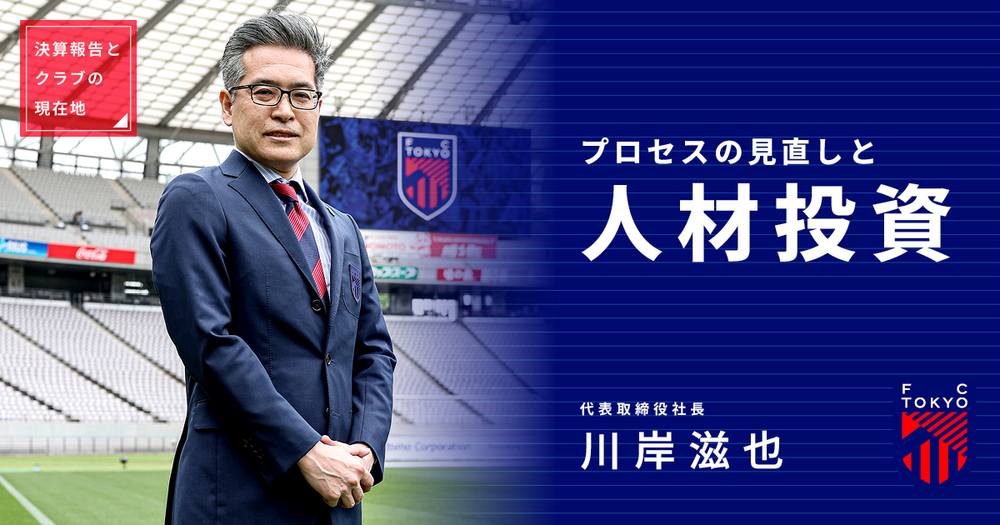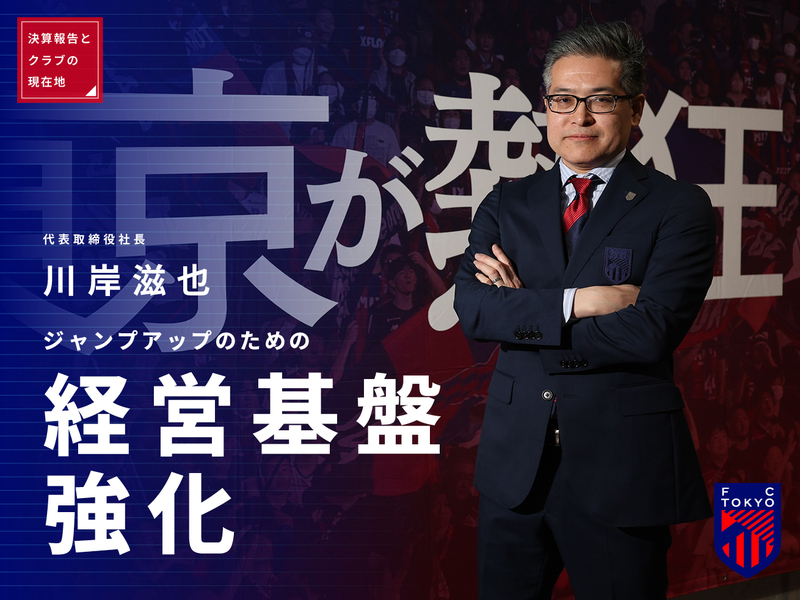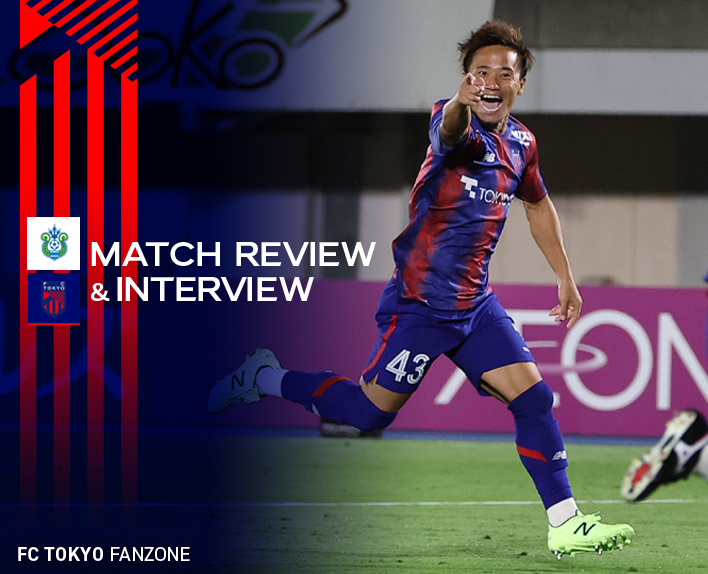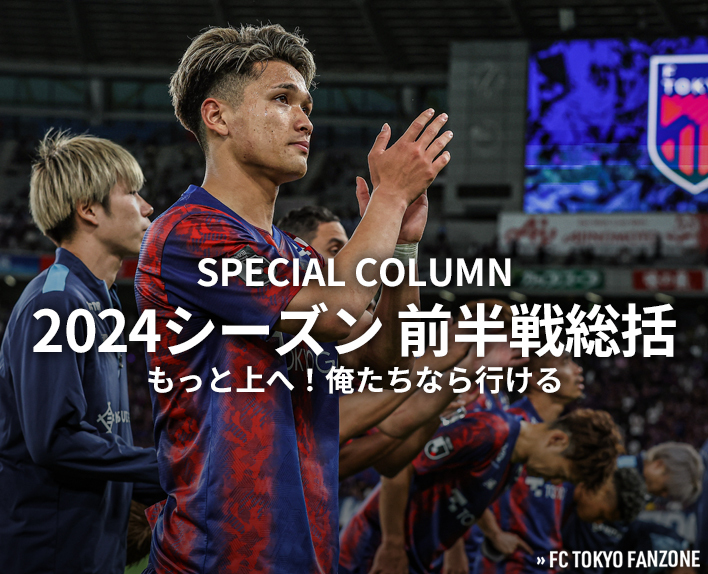The financial report for FC Tokyo for the fiscal year 2023 announced on May 21. Operating revenue recorded the highest in the club's history at 5.929 billion yen, achieving an increase of 660 million yen compared to the previous year. On the other hand, there is also the current situation of recording a deficit for four consecutive years.
What kind of initiatives were there? And what is the current position of the club as it completely breaks away from the COVID-19 pandemic and looks towards the future?
In the second part, we spoke with President Shigeya Kawagishi about the current status of the emblem change, as well as the dual aspects of business and strengthening.
Interview and Composition = Kei Sato (Freelance Writer)
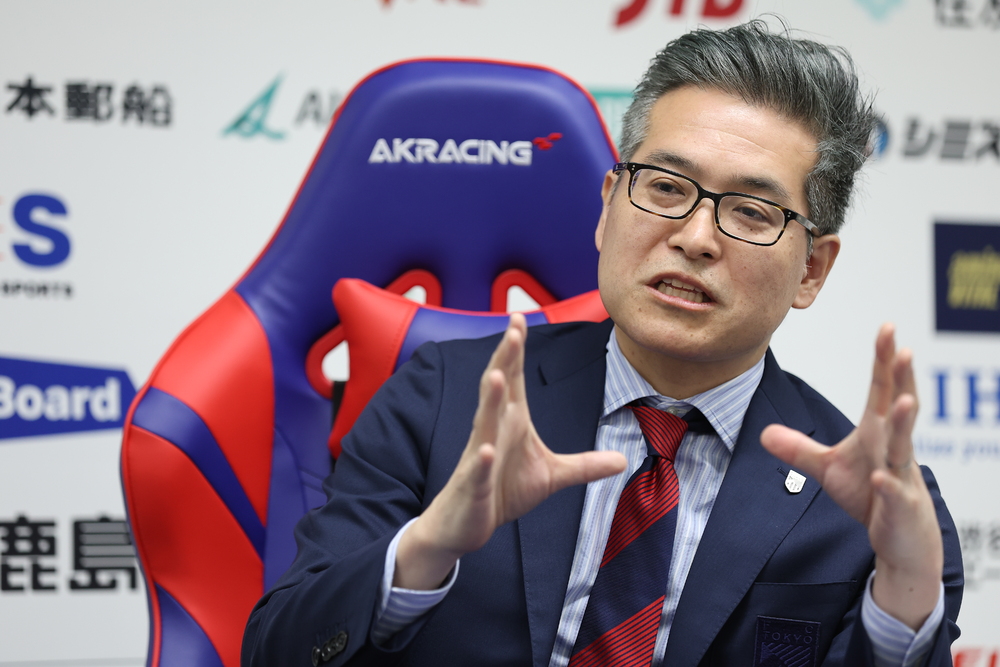
──The club emblem has been renewed starting from the 2024 season. Please tell us again about the background and effects of this change.
Kawagishi What I felt when I became president was that the goal setting within the club was ambiguous. While the fans and supporters shared the goal of "winning the J1 League," there were various opinions on what kind of club they wanted it to be. Therefore, at the beginning of the 2023 season, we formulated 'FC Tokyo VISION 2030' and shared the goal setting, including the direction of the club.
Change of Emblem was not something I considered at all when I became president, but while formulating VISION2030, I began to think about the nature of the emblem as well. There are many things we need to do to achieve VISION2030. Therefore, we reached the conclusion to change the emblem to show our determination to move forward and take on challenges. The design embodies the meaning of "inheritance and innovation." One supporter mentioned, "I can feel a considerable determination knowing that there will be criticism, yet you still choose to proceed." As we reset our goals as a club, it coincides with the 25th anniversary of the club's founding, and this initiative was aimed at taking a new step into the next quarter-century.
──How do you feel about the current situation with the new emblem adopted?
Kawagishi I don't think everyone is fully convinced, but I feel that it is gradually being accepted. The opportunities to actually pick up merchandise are increasing, and the uniforms for the 2024 season are selling significantly better compared to the same period in the 2023 season. Sales at the stadium are also showing unprecedented numbers, marking a start that exceeds expectations. There are still not many well-developed products utilizing the new emblem, so we will gradually continue product development. I hope that you will observe the club's determination and activities, and we aim to progress so that one day everyone will be convinced.
──I believe that the increase in uniform sales is a trend that has continued since last year. Is there a possibility of further revenue growth in the 2024 fiscal year?
Kawagishi In any club, merchandise sales are largely dominated by uniforms. This is something I discussed with Chairman Naoki Okane, and I have heard that there has been a culture of supporting the team by wearing blue or red items. Since before I took office, I have been thinking and working on getting everyone to wear uniforms to support the team, and the results are starting to bear fruit now. In fact, even during the COVID-19 pandemic, merchandise sales have been gradually increasing, and they jumped up last season after coming out of the pandemic. This season, it seems we can reach an even higher level.
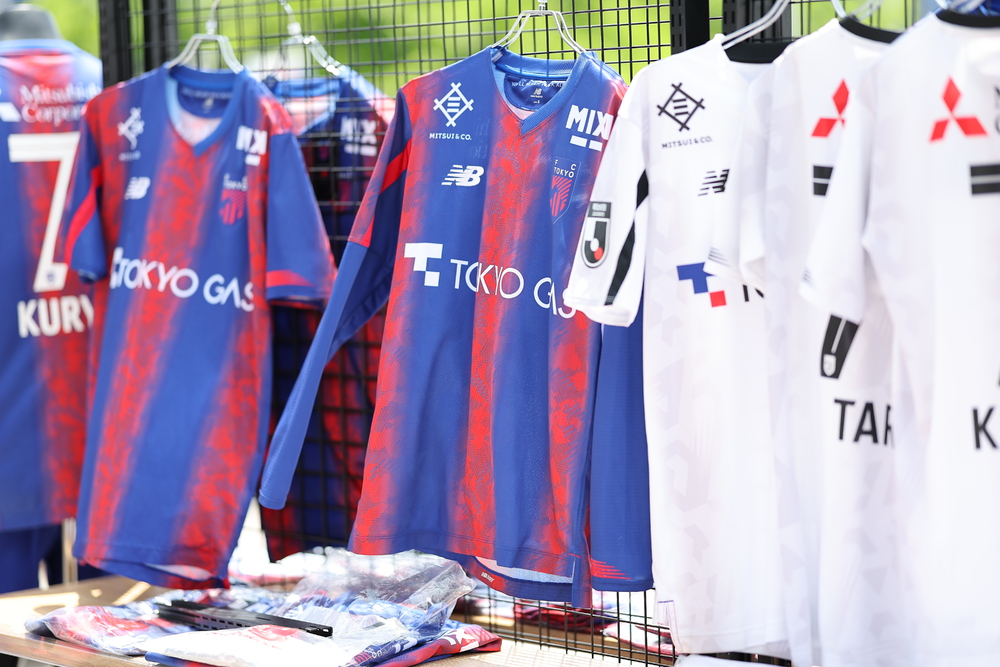
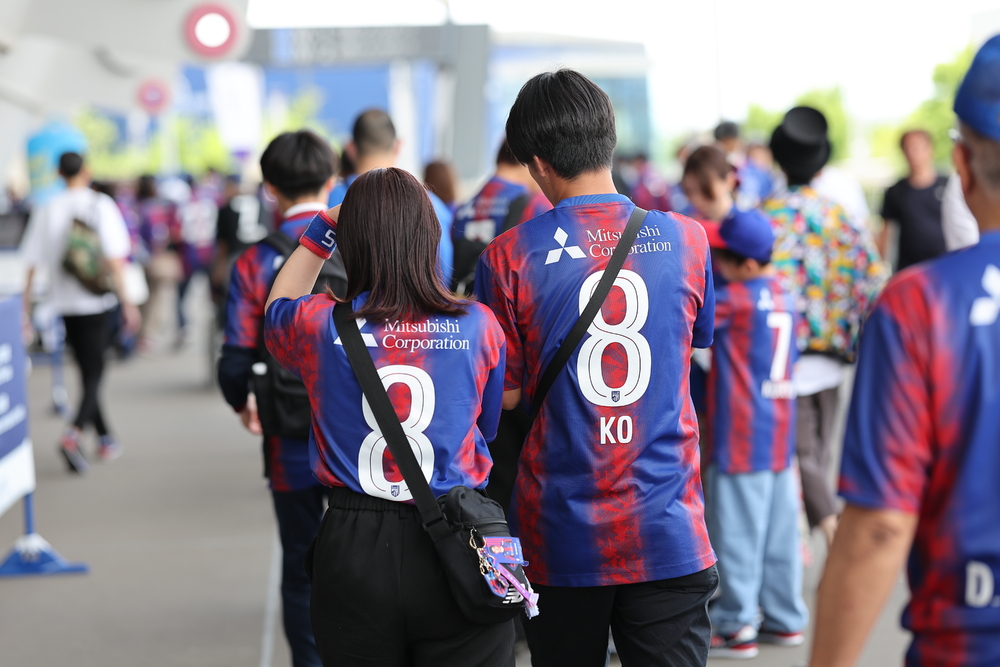
──Can we expect sales of merchandise to reach numbers beyond what was planned?
Kawagishi The figure for the 2023 fiscal year was 600 million yen, but I believe it will exceed that. However, according to the financial results announced by Urawa Reds, merchandise revenue was 1.65 billion yen. There are always those above us. While firmly recognizing the possibilities, I would like to aim for around 900 million to 1 billion yen first.
──In the context of 'VISION2030', the year 2023 was positioned as the year of 'overcoming the COVID-19 pandemic'. How is this past year being summarized?
Kawagishi was able to recover earlier than expected. The impact of the pandemic was quite significant, with sales dropping from 5.6 billion yen in 2019 to 4.6 billion yen in 2020. When I became president in 2022, I was anxious about how far we could recover. Given the circumstances, I considered the fiscal years 2022 and 2023 as phases to bring sales back to the level of 2019, before the pandemic.
However, in the 2023 fiscal year, we were able to surpass the 2019 fiscal year. Initially, we thought that we would enter the "Phase 2" of the "VISION 2030" re-growth period after the 2024 fiscal year, but I believe we can say that we have entered it as of the 2023 fiscal year. However, it is also important to understand that we have not fully recovered everything from before the pandemic.
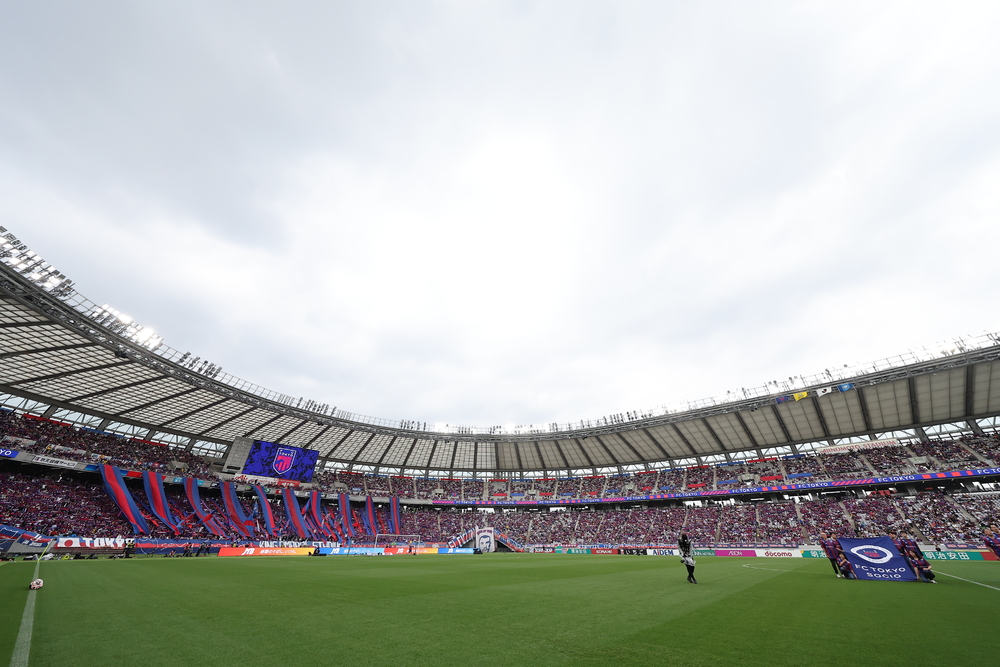
──What does that mean?
Kawagishi Compared to before the pandemic, attendance has only returned to about 93 percent of the 2019 season. Upon examining the details, it became clear that there has been significant turnover. In other words, it is not that 93 percent of the people who were there during the 2019 season have returned; rather, the current attendance of 93 percent includes many new attendees. This fact is shared among the clubs, but we must accept this point calmly.
──I think it will be a very difficult task to attract new customers from now on, but for example, will holding matches at the Japan National Stadium have a significant effect?
Kawagishi Since the 2022 season, we have already held 6 matches at the Japan National Stadium. The effects are definitely showing. The number of registrations for FC Tokyo with a J.League ID is about to reach 600,000. This is an outstanding figure in the J.League, with many registering as part of initiatives aimed at the National Stadium events. Analyzing the residential areas, it is clearly leaning more towards the eastern side of Tokyo compared to the events held at Ajinomoto Stadium. In terms of being able to approach people we have never encountered before, holding matches at the National Stadium can be considered an important opportunity.
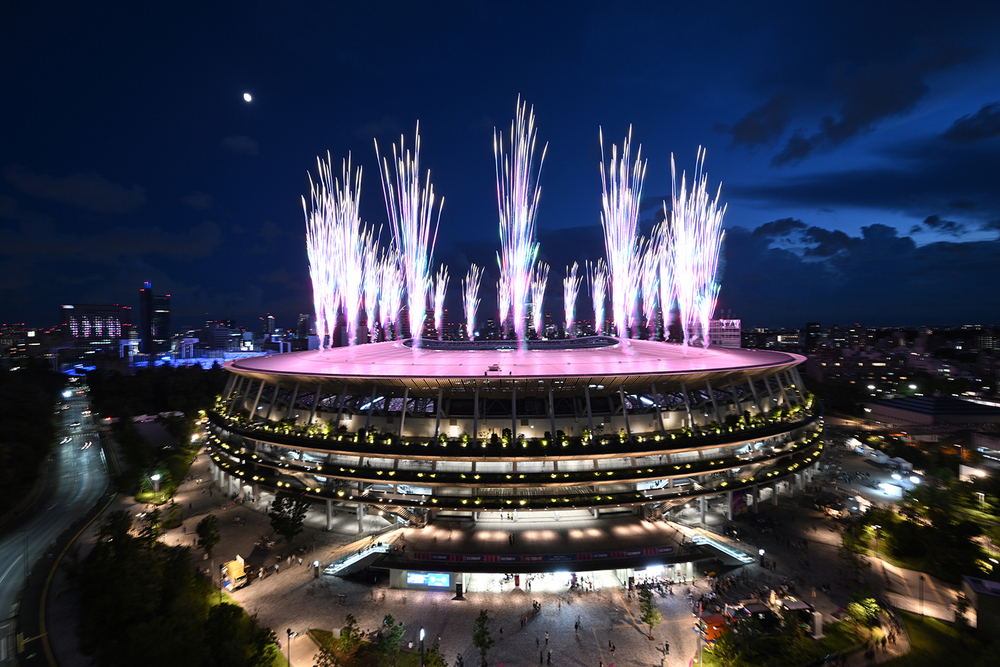
──To turn new customers into repeat customers, I believe we cannot ignore the enhancement of the core appeal of soccer itself. Communicating that appeal to those who have not yet experienced it and increasing the attractiveness of the soccer that the team practices are two sides of the same coin, and it may not be a matter of prioritizing one over the other, but what are your thoughts on that?
Kawagishi First and foremost, professional sports clubs derive their value from the team's performance itself. In the case of FC Tokyo, as a soccer club, the essence and results of soccer, along with the presence and name value of the players, are the sources of the club's value. The business staff's job is to convert that value into money and enable reinvestment. It is clear that what is communicated from the pitch, namely performance, is important, and this is an undeniable fact. Therefore, not neglecting investment in this area becomes a fundamental principle.
When I first took office as president, I was an outsider to soccer, so I didn't immediately know what to do in that regard. On the other hand, I was able to quickly identify areas for improvement in the business aspect. Therefore, I focused on improving the business side that I could tackle. As a result, we were able to increase sales to nearly 6 billion yen in two years. That said, personally, I feel that the business side has reached its peak. I also have the sense that we are close to the maximum value we can achieve on the business side. As I mentioned earlier, the club's brand value is built through soccer. Therefore, the next step is to elevate our performance in soccer as well. The theory is to turn the gears with soccer and recover through business. While the competitive aspect has not been untouched, I plan to take a more proactive approach starting this season, and we are actually beginning to take action.
──What specific initiatives have you started?
Kawagishi Last season, we finished 11th in the Meiji Yasuda J1 League, which is obviously not a satisfactory result. We definitely need to improve in terms of performance. The challenging part is that this field is all about 'people.' For example, even if we have analysts and various analysis systems in place, it is still people who arrange and express that on the pitch. When you think about it, it is an incredibly analog world, which is why it is difficult. Improving player performance also relies on people, so it is necessary to invest in the foundational 'people.' Of course, this is based on the intentions of the field, but specifically, we have increased the number of staff involved in the soccer aspect.
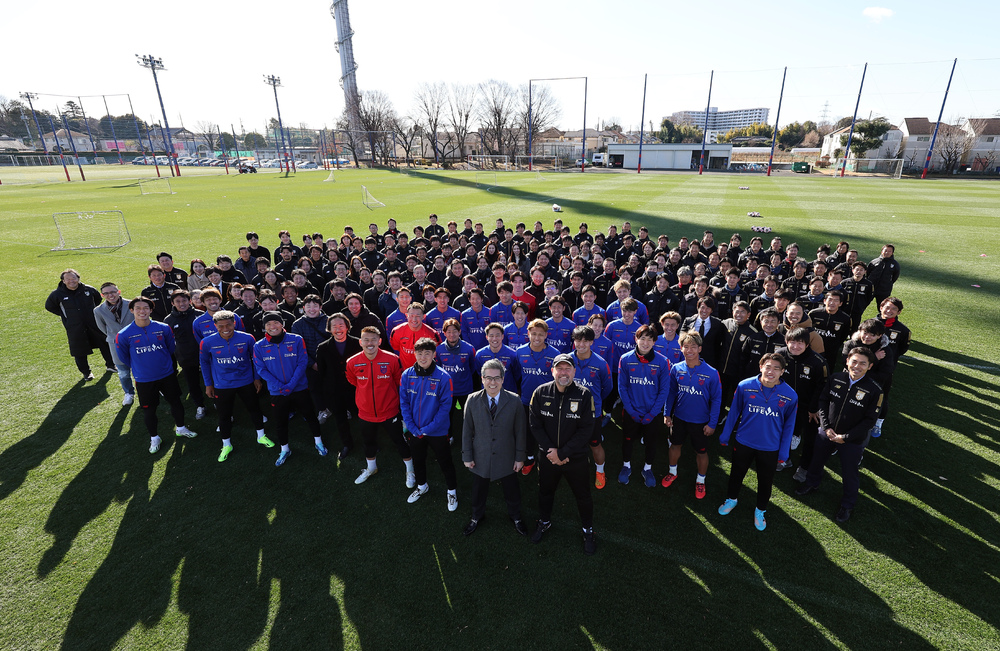
──The number of staff is large during practice coverage, and there is a lot of shouting, creating a sense of liveliness greater than ever before.
Kawagishi Of course, I understand that simply increasing the number of people does not lead to immediate results. We must carefully assess the situation at every step. Additionally, this is something I discussed with General Manager Mitsushiro OBARA, but sports are greatly influenced by mental factors, and I felt that FC Tokyo experiences significant ups and downs. To minimize the fluctuations in performance and maintain a high level, we are adding staff who can support the mental aspect.
What the club can support in terms of improving competitive performance is fundamentally an investment in people and the environment. Therefore, we have first strengthened our staff. I believe we have established a system that can support players and the team more meticulously than ever before.
──What about the aspect of player reinforcement? Looking at last season's standings, Vissel Kobe, with the highest personnel expenses in 2022, and Yokohama F.Marinos, in second place, ended up as the first and second in the league. FC Tokyo's personnel expenses were 2.538 billion yen, ranking ninth overall. There are many similar cases in major European leagues, but what are your thoughts on that?
Kawagishi I truly believe that is the case. No matter how much analysis we conduct, there is undoubtedly a correlation between personnel costs and rankings. We recognize that our strengthening budget is ninth in the league, and we want to raise that as a challenge for the club. To that end, we are focusing on increasing revenue from the business side, and we want to create a solid organization to enable investment.
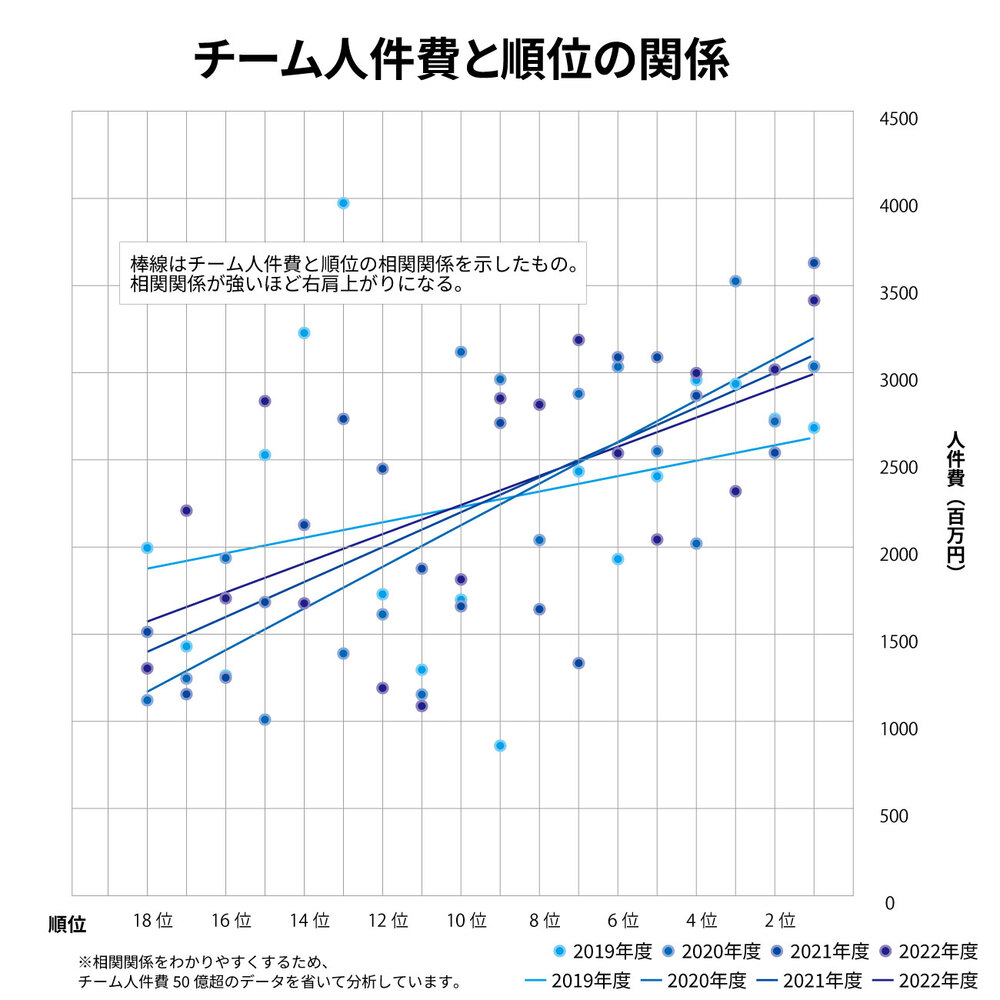
However, this also means that it will take some time. Therefore, I feel that we must do what we can to rise to the next level as soon as possible. I want to strengthen our management foundation and create a situation where we can jump up at some point. Of course, it is not acceptable to take a gamble and end up failing in a year, so I also want to expand our base while identifying the right moments to take risks. At this point, I cannot promise anything to our fans and supporters, but I want to convey that we are considering such policies.
──Finally, please give a message to the fans and supporters.
Kawagishi The change of the emblem has altered the traditions from the club's founding period, and because everyone has had various feelings and thoughts, there may have been a time last season when the FC Tokyo family felt a bit fragmented. This season, the team's performance seems to be stabilizing little by little, and I feel that the support in the stadium is becoming more unified. I want to express my heartfelt gratitude for creating a wonderful atmosphere. Based on the club policy outlined in 'VISION2030', I hope to move forward and make the 2024 season one that fosters a greater sense of unity. Let's continue to move forward together.
The first part is here
